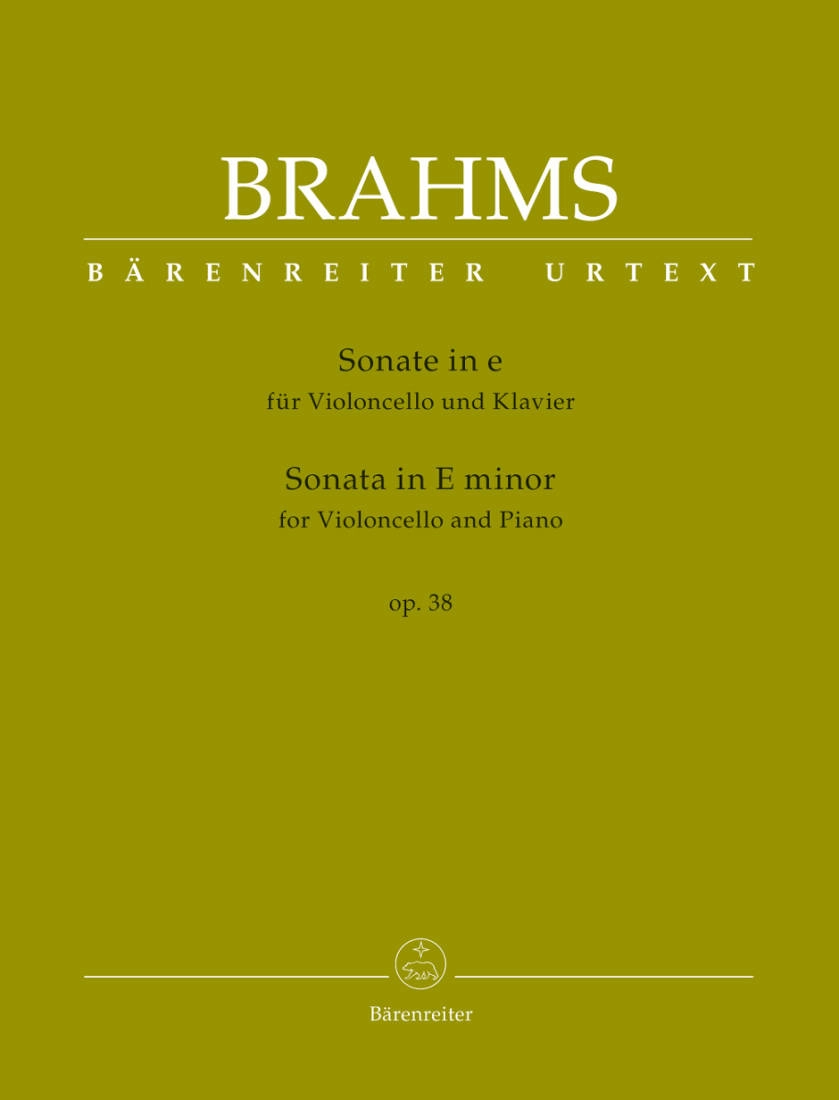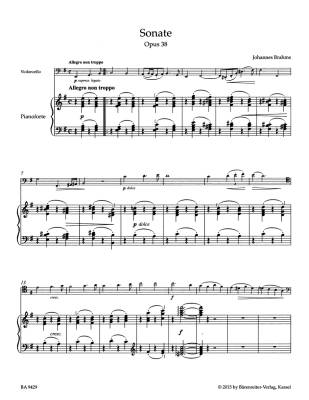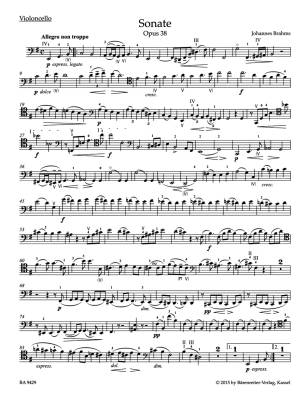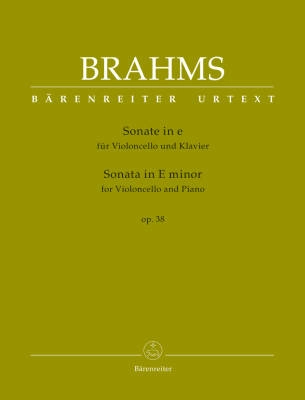Opens in a new window
Baerenreiter Verlag Sonata in E minor op. 38 - Brahms/Costa/Wadsworth - Cello/Piano - Book

Additional Photos:


- Composer/Author: BRAHMS, JOHANNES
- Instrumentation: CELLO
- Model # BA9429
Editors: Clive Brown, Neal Peres Da Costa, Kate Bennett Wadsworth
Format: Book
Instrumentation: Cello and Piano
The first three movements of Johannes Brahms' E minor Cello Sonata were composed in 1862, the last movement was written in 1865. During the first years of its performance the work was received with mixed enthusiasm. By the end of Brahms' life, however, it was widely performed and by the first decades of the 20th century it was firmly embedded in the repertoire of many distinguished cellists. It was notably Robert Hausmann's advocacy of the work which seems to have contributed greatly to its promotion.
Of particular value to the editors were the three early performance editions of the Cello Sonata op. 38 by Cornelius van Vliet and Edwin Hughes, Hugo Becker and Carl Friedberg, as well as Julius Klengel. The cellists' van Vliet, Becker and Klengel's fingering and bowing allows for a better understanding of their performance practice. As such, the Baerenreiter edition comes with a cello part marked with fingering and bowing by the editors which are based on the practices of Brahms' contemporaries. An unmarked urtext part is also provided.
An important part of this edition is the extensive preface. Firstly it informs about the works' origins, early performances, its publication as well as early reception. Truly remarkable is the unique Performance Practice Commentary. Here the editors take the premise that already a few decades after Brahms' death, a widening gulf developed between the composer's expectations and the performance practices of the early 20th century. In a very concrete and practical way, the editors summarize some of the key issues in understanding Brahms' notation with regard to rhythm and timing, dynamics and accentuation, dots and strokes, slurring and non legato, piano pedalling and overholding, piano arpeggiation and dislocation, string instrument fingering, string instrument harmonics and vibrato. In this way, the edition offers an exciting and often surprising insight in Romantic musical interpretation.
Contents:
- Preface
- Performance Practice Commentary
- Sonata for Violoncello and Piano in E minor op. 38
- Critical Report
Q & A
There are currently no questions for this product.
Reviews
There are currently no reviews for this product. Be the first to write one!





